
When Canada's first subway line officially opened on March 30, 1954, the first trains to run the 4.6 miles between Union Station and Eglinton didn't look much like the uniform silver vehicles plying the underground TTC network today.
Painted bright red, the British-made Gloucester "G-Series" trains proudly represented the post-war optimism of the developing city.
According to Transit Toronto, several companies submitted bids to build the country's first fleet of underground trains.
The winning tender, entered by Gloucester Railway Carriage & Wagon Co. of Gloucester, UK, was accepted after TTC officials experienced the smooth ride provided by the company's other trains running on the London Underground.
Though they were longer and considerably heavier than the TTC wanted, the Commission bought 104 of the company's Gloucester vehicles for $7.8 million in 1951. The new cars were delivered in batches to the ports of Montreal and Halifax starting in 1953.
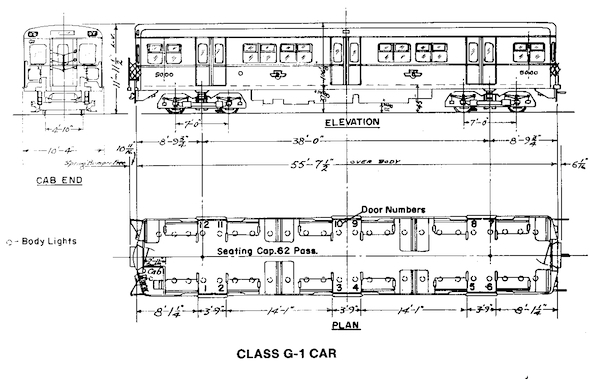
Illustration of subway car.
Freighted to Toronto on the back of modified CNR flatcars from Quebec and Nova Scotia, the first of the new trains to arrive were set up for display at the Toronto exhibition grounds complete with a mock-up station, platform, track and signals.
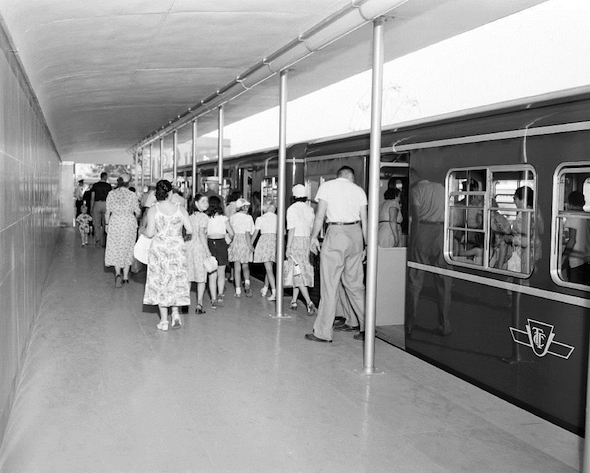
View of the mock station and Gloucester car at the exhibition grounds.
For a few weeks in late August and early September 1953, Toronto residents were able to get up close to the trains that would soon be operating beneath Yonge Street in place of the overcrowded streetcars.
Before the trains could be readied for service the exhibition had to be dismantled and the trains moved across town.
Specially adapted streetcars towed the train to the Davisville yard via Bathurst, St. Clair and Yonge but a derailment of the leading car in the convoy on a section of temporary track on Yonge meant the train had to spend a night in the open in a turning loop to keep it out of the way of streetcar traffic.
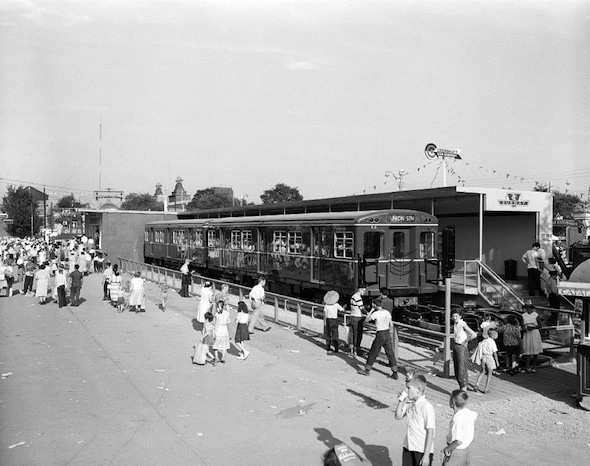
People looking at the new subway cars.
With the Yonge subway complete, the first G-Series trains began operating the busy underground route. Years ahead of predictions, the ridership figures on the line began to exceed the number of available trains.
To counteract this, the TTC purchased an additional set of trains from Gloucester, this time constructed from lightweight aluminum instead of steel, to help keep up with passenger demand.

Mayor Allan A. Lamport and Ontario Premier Leslie Frost take the inaugural trip on the Yonge subway.
The new silver aluminum cars had no engine and were designed to be bookended by the older, red steel cars to reduce weight and improve speed.
Named the "G-3" series, the 34 new lightweight cars cost $3.2 million and were delivered in 1958 and 1959, boosting the TTC's subway fleet in line with demand and ridership projections.
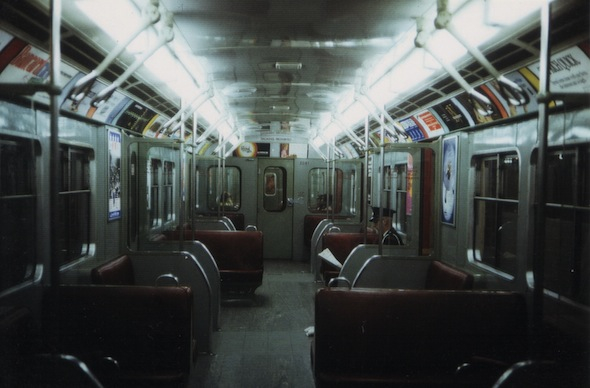
Inside the subway cars.
On March 27, 1963, the Toronto subway experienced its first brush with disaster when a small fire beneath a Gloucester car rapidly spread out of control at Union Station.
The blaze caused the complete loss of the train, seriously damaged the tunnel and took several hours for firefighters to completely extinguish.
When the smoke cleared the melted remains of the train were towed back to Davisville and scrapped. Although there were no injuries, the accident was the first time a TTC subway train was written off.
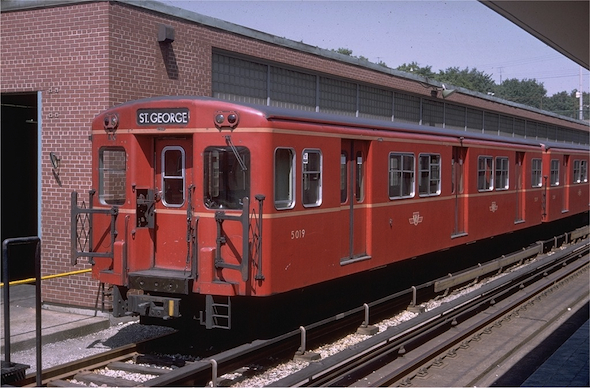
A subway car.
Over the next 25 years the workhorse Gloucester cars operated on the extended Yonge-University-Spadina line while the TTC gradually introduced the replacement Hawker-Siddeley H-Series vehicles.
Due to construction delays on the H-Series cars, the last Gloucesters weren't officially retired until 1990.
As testament to the build quality of the old trains, several cars were converted into maintenance vehicles that continued to grind rails, collect garbage, and wash tunnel walls well into the 1990s.
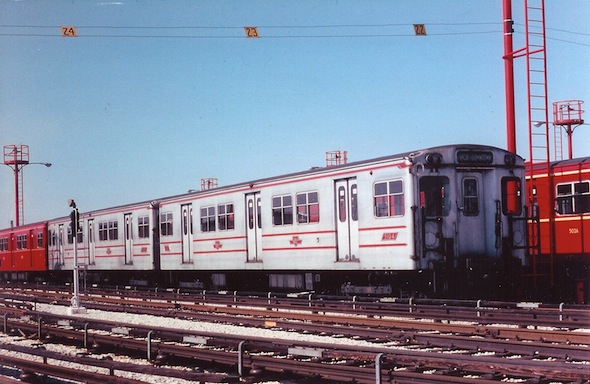
Silver aluminium "G-2" cars.
The final rush-hour Gloucester G-Series train made normal stops on its way round the subway system on October 26, 1990.
An offer from Lima, Peru to purchase the remainder of the aging vehicles never materialized and those that weren't converted were scrapped at the Wilson yard in March, 1991.
The only remaining Gloucester train, car numbers 5098 and 5099, is currently on display at Halton County Radial Railway museum in Milton.
by Chris Bateman via blogTO

No comments:
Post a Comment